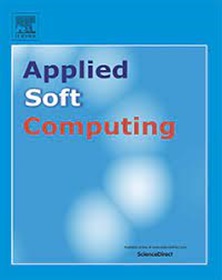带有标签松弛和样本权值自适应的不平衡广义学习系统
IF 7.2
1区 计算机科学
Q1 COMPUTER SCIENCE, ARTIFICIAL INTELLIGENCE
引用次数: 0
摘要
广义学习系统(BLS)作为一种轻量级的网络架构,已经广泛应用于各种分类和回归任务。然而,BLS及其变体在解决不平衡分类问题方面仍然不是最优的。这些模型通常很少关注原始功能的质量。它们的监督机制通常依赖于严格的二元标签矩阵,这对近似施加了限制,并且无法与底层数据分布保持一致。此外,它们通常不区分多数阶级和少数阶级的贡献,导致预测偏向多数阶级。在本文中,我们提出了一种新的非平衡BLS框架,该框架将标签松弛和样本权重自适应相结合,以解决非平衡分类任务中的挑战。首先,采用遗传规划对原始特征进行优化,提高数据表示能力;然后,基于两两标签关系构建潜在标签空间,实现标签的灵活松弛;在此基础上,提出了一种基于类内和类间分布的动态加权机制,以平衡多数类和少数类的影响。在30个基准数据集上进行的大量实验表明,该方法显著优于各种最先进的方法,平均G-mean和AUC得分分别为89.6%和90.0%。这些结果验证了该模型在解决不平衡分类任务方面的有效性和优越性。本文章由计算机程序翻译,如有差异,请以英文原文为准。
Imbalanced Broad Learning System with label relaxation and sample weight adaptation
The Broad Learning System (BLS), as a lightweight network architecture, has been extensively applied to various classification and regression tasks. However, BLS and its variants remain suboptimal for addressing imbalanced classification problems. These models often pay little attention to the quality of original features. Their supervision mechanisms typically rely on strict binary label matrices, which impose limitations on approximation and fail to align with the underlying data distribution. Additionally, they generally do not differentiate the contributions of majority and minority classes, leading to a bias towards majority classes in predictions. In this paper, we propose a novel imbalanced BLS framework that integrates label relaxation and sample weight adaptation to address challenges in imbalanced classification tasks. First, genetic programming is employed to optimize the original features, improving data representation capability. Then, a latent label space is constructed based on pairwise label relationships, which serves to achieve flexible label relaxation. Furthermore, a dynamic weighting mechanism is proposed based on intra-class and inter-class distributions to balance the influence of majority and minority classes. Extensive experiments conducted on 30 benchmark datasets demonstrate that the proposed method significantly outperforms various state-of-the-art approaches, with average G-mean and AUC scores of 89.6% and 90.0%, respectively. These results validate the effectiveness and superiority of the proposed model in addressing imbalanced classification tasks.
求助全文
通过发布文献求助,成功后即可免费获取论文全文。
去求助
来源期刊

Applied Soft Computing
工程技术-计算机:跨学科应用
CiteScore
15.80
自引率
6.90%
发文量
874
审稿时长
10.9 months
期刊介绍:
Applied Soft Computing is an international journal promoting an integrated view of soft computing to solve real life problems.The focus is to publish the highest quality research in application and convergence of the areas of Fuzzy Logic, Neural Networks, Evolutionary Computing, Rough Sets and other similar techniques to address real world complexities.
Applied Soft Computing is a rolling publication: articles are published as soon as the editor-in-chief has accepted them. Therefore, the web site will continuously be updated with new articles and the publication time will be short.
 求助内容:
求助内容: 应助结果提醒方式:
应助结果提醒方式:


